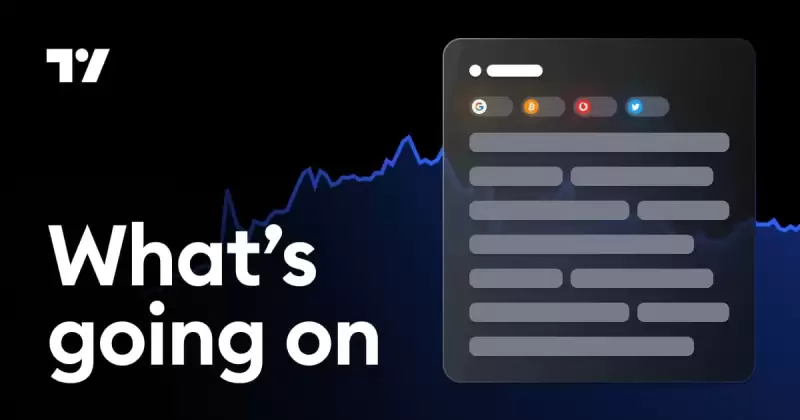 |
|
 |
|
 |
|
 |
|
 |
|
 |
|
 |
|
 |
|
 |
|
 |
|
 |
|
 |
|
 |
|
 |
|
 |
|
Cryptocurrency News Articles
Clash of the Titans: Tron and Ethereum Duel for Crypto Dominance
May 07, 2024 at 04:35 am
Tron and Ethereum, two prominent blockchain platforms, exhibit distinct advantages in different markets. Tron dominates in Asian markets, fueled by its partnership with Tether (USDT), while Ethereum remains favored in Western markets due to its regulatory compliance and innovation, supported by Circle's USDC stablecoin. Despite Ethereum's higher market capitalization, Tron boasts superior daily user engagement, suggesting contrasting levels of market adoption. The long-term competition between these giants remains uncertain, with potential outcomes ranging from market dominance by one, coexistence, or the emergence of a new challenger blockchain.

In the ever-evolving realm of blockchain technology, two titans stand out: Tron and Ethereum. Their distinct approaches, regional strengths, and technical capabilities have propelled them to the forefront of the crypto market, each vying for dominance in the hearts of investors.
Tron: The Asian Giant Under Regulatory Scrutiny, Powered by Tether
Tron, founded by the enigmatic Justin Sun, has established a formidable presence in Asian markets. Its partnership with Tether, the most widely used stablecoin, has played a pivotal role in its success. Tron's low transaction fees and instant payments, facilitated by Tether, have made it an attractive option for those seeking an accessible and cost-effective payment system.
However, Tron's rapid rise has not been without controversy. Regulatory scrutiny, particularly in the West, has cast a shadow over its reputation. Allegations of insider trading, market manipulation, and plagiarism have tarnished the blockchain's image. Justin Sun's flight from Chinese authorities and subsequent legal battles have further fueled investor skepticism.
Despite these setbacks, Tron has gained significant traction in markets where traditional banking systems are lacking or inefficient. In countries like China, Vietnam, and South Korea, Tron has become a reliable alternative for cross-border payments and a means to navigate currency fluctuations.
Ethereum: The Western Favorite for Compliance and Innovation, Backed by USDC
Ethereum, on the other hand, enjoys a stellar reputation in Western markets. Its founder, Vitalik Buterin, is widely recognized for his contributions to blockchain technology and its ethical development. Ethereum's focus on compliance and innovation has attracted numerous institutional investors and developers.
USDC, a stablecoin compliant with US financial regulations, has emerged as a popular alternative to USDT within the Ethereum ecosystem. This has further bolstered Ethereum's standing as a safe and reliable platform for crypto investing and innovation.
Ethereum's thriving developer community has propelled the blockchain to the forefront of blockchain innovation. With over 230 core developers actively contributing to its ecosystem, Ethereum boasts a vast array of decentralized applications (dApps) and protocols. From DeFi to gaming to social media, Ethereum's versatility has made it a breeding ground for groundbreaking projects.
Market Dynamics: A Tale of Two Worlds
The contrasting regional strengths of Tron and Ethereum reflect the diverse needs and regulatory environments of different markets. While Tron has gained a foothold in Asia, where its payment capabilities fill a critical void, Ethereum reigns supreme in the West, where its compliance and innovation appeal to investors and developers alike.
In terms of market capitalization, Ethereum maintains a significant lead over Tron, at $386 billion compared to $10.6 billion. However, Tron's greater daily user activity, with approximately 1.9 million active users compared to Ethereum's 465,000, suggests a higher level of engagement among its user base.
Technical Prowess: A Race for Scalability and Speed
Both Tron and Ethereum employ scalable blockchain architectures to handle high transaction volumes. Tron utilizes a Delegated Proof-of-Stake (DPoS) consensus mechanism, while Ethereum relies on a Proof-of-Stake (PoS) model. DPoS is generally faster and can process more transactions per second than PoS, giving Tron a theoretical advantage in transaction speed.
However, Ethereum's upcoming transition to Ethereum 2.0 promises significant scalability improvements. Layer-2 solutions, such as Arbitrum and Polygon, offer faster transaction speeds and lower fees within the Ethereum ecosystem.
Programming Languages: Catering to Developer Needs
Ethereum's support for a wide range of programming languages, including Python, Java, and C++, makes it more accessible to developers. Tron, on the other hand, has a narrower focus, supporting only Python and Solidity.
Future Prospects: Coexistence, Competition, or Disruption?
The future of the Tron-Ethereum rivalry remains uncertain. Several scenarios are plausible:
- Scenario 1: Winner Takes All
Ethereum, with its wider investor acceptance and superior scalability solutions, could emerge as the dominant blockchain, relegating Tron to a niche player.
- Scenario 2: Coexistence
Both Tron and Ethereum could continue to coexist, each catering to different market segments. Tron's focus on payment solutions in emerging markets could complement Ethereum's role as an innovation hub in developed markets.
- Scenario 3: A New Challenger Emerges
A third blockchain, such as Solana, could disrupt the market, surpassing both Tron and Ethereum in terms of performance and functionality.
Investor Takeaway: A Balanced Approach
For investors, the choice between Tron and Ethereum depends on risk tolerance and investment goals.
ETH offers the allure of a well-established blockchain with significant institutional support. Its long-term holding prospects are promising, and its staking options provide a decent return.
TRX presents the opportunity for high staking rewards and the advantages of near-zero transaction fees. However, its regulatory risks and association with Justin Sun's legal troubles should be carefully considered.
A savvy investor might opt for a diversified approach, allocating funds to both ETH and TRX to balance risk and reward.
Disclaimer:info@kdj.com
The information provided is not trading advice. kdj.com does not assume any responsibility for any investments made based on the information provided in this article. Cryptocurrencies are highly volatile and it is highly recommended that you invest with caution after thorough research!
If you believe that the content used on this website infringes your copyright, please contact us immediately (info@kdj.com) and we will delete it promptly.
-

-

-

-

-

-

-

- Ripple (XRP) Introduces Its RLUSD Stablecoin to the Stablecoin Market
- Apr 03, 2025 at 04:00 pm
- Ripple introduced its RLUSD stablecoin to the stablecoin market through its launch on Kraken cryptocurrency exchange. The USD-pegged stablecoin aims to boost its cross-border payment functions and integrate with the payment platform.
-

-

- Bitcoin (BTC) Price Consolidation May Be Precursor to a Market Drop, Analyst Says
- Apr 03, 2025 at 03:55 pm
- Bitcoin has seen a notable price consolidation over the past few weeks, trading between the $84,000 and $86,000 levels. Despite the initial surge in price, the cryptocurrency has faced a decline of 3.7% in the past week and nearly 10% in the past month, signaling a period of stagnation in its upward momentum.




























































